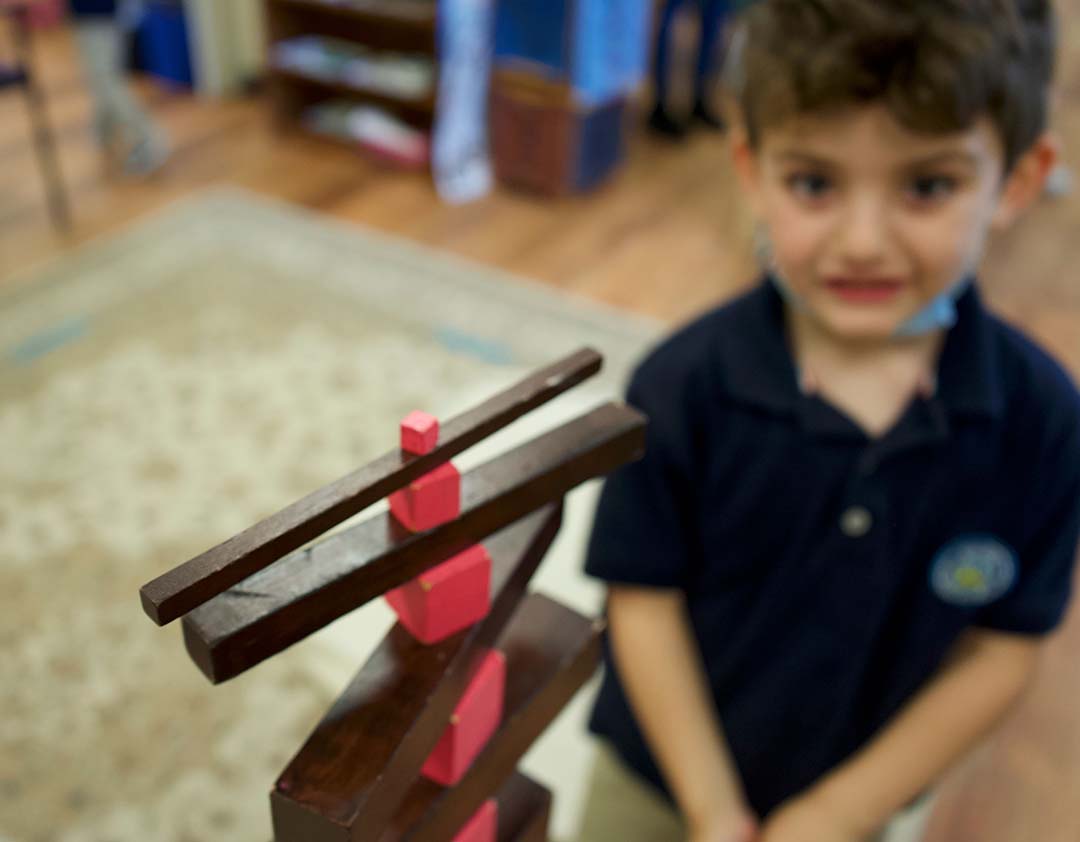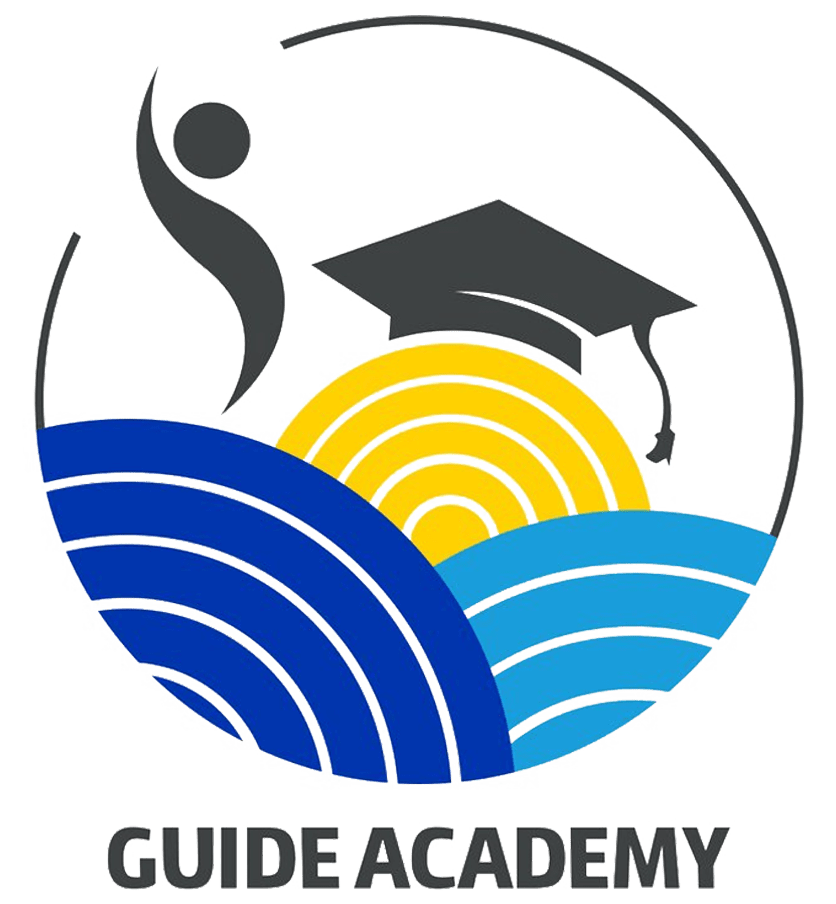Montessori
Program
Montessori
MONTESSORI CURRICULUM
Guide Academy uses the Montessori Educational System based on AMI, IAPM, or AMS Montessori method for Pre-school to 6th Grade. This method: Focuses on personal development rather than exams.
Produces more mature, creative, and socially adept children.
Displays a greater sense of “justice and fairness“, and is less likely to engage in “rough play” during break times.
Has ranges of physical objects that are organized to stimulate student’s instincts and interests.
Promotes individual liberty of children to choose their own activities to follow their inner guidance for self-directed learning.
Involves indirect teaching to control the environment, not the child.
Contrasts sharply with the ordinary teacher’s role of implementing a pre-determined curriculum.
Allows the teacher to resolve misbehavior by refocusing the child on some positive activity rather than rewards and punishments.
Contains five basic categories for 3-6-year-olds is practical life, sensorial, math, language, and culture.
MONTESSORI CURRICULUM
Guide Academy uses the Montessori Educational System based on AMI, IAPM, or AMS Montessori method for Pre-school to 6th Grade. This method: Focuses on personal development rather than exams.
Produces more mature, creative, and socially adept children.
Displays a greater sense of “justice and fairness“, and less likely to engage in “rough play” during break times.
Has ranges of physical objects that are organized to stimulate student’s instincts and interests Promote individual liberty of children to choose their own activities to follow their inner guidance for self-directed learning.
Involves indirect teaching to control the environment, not the child.
Contrasts sharply with the ordinary teacher’s role of implementing a pre-determined curriculum.
Allows the teacher resolving misbehavior by refocusing the child to some positive activity, rather than rewards and punishments.
Contains five basic categories for 3-6-year-olds is practical life, sensorial, math, language, and culture.
The first plane (ages 3–6) involves basic personality formation and learning through physical senses. The second plane of development (6–12) involves learning through abstract reasoning, developing through a sensitivity for imagination and social interaction with others. Five-year-olds will be reading and performing mathematical computation, and 12-year-olds will write “significantly more creative” essays using more sophisticated sentence structures. 3-6 year Lorem Ipsum is simply dummy text of the printing and typesetting industry. Lorem Ipsum has been the industry’s standard dummy text ever since the 1500s
3-6 year Lorem Ipsum is simply dummy text of the printing and typesetting industry. Lorem Ipsum has been the industry’s standard dummy text ever since the 1500s
3-6 year Lorem Ipsum is simply dummy text of the printing and typesetting industry. Lorem Ipsum has been the industry’s standard dummy text ever since the 1500s
3-6 year Lorem Ipsum is simply dummy text of the printing and typesetting industry. Lorem Ipsum has been the industry’s standard dummy text ever since the 1500s
A child’s inner need is to become a master of himself and his environment, and to relate socially to others. Buttoning, bow tying, and lacing, pouring, scooping, and sporting activities, as well as washing a table, floral arrangement, and food preparation to develop hand-eye coordination, polite manners in serving each other, folding hands napkins, sitting on a chair, walking in the line, and silent game.
The central purpose of mathematical education is to provide a building block of knowledge that allows children to organize, categorize information, and experience the natural order of the physical environment. The curriculum offers activities in several areas, including developing pre-math concepts, from zero to ten, place value, and fundamental operations, which include addition, multiplication, subtraction, and division. The Montessori math materials have several aspects that allow the child to gain the best understanding of the subject. The materials are three-dimensional, real, and have multi-sensory objects instead of flat two-dimensional pictures. The central purpose of Language education is to provide a basis for children to be able to communicate and to prepare them for social-intellectual functions of language, which is without excessive effort on his/her part. Dr. Montessori’s Own Handbook that “Early childhood is, in fact, the age in which The development of intellect to construct the conscious thoughts and preparing the child for further development through refining the senses. All knowledge is gained through the 5 senses; the child will be learning to compare, contrast, discriminate, and laying the foundation to make subsequent education easier, spontaneous, and joyful. To experience the natural order of the physical environment, pink tower (series of ten sequential cubes, varying in volume); broad stairs (ten wooden blocks, sequentially varying in two dimensions) (for refining sense of dimensions); color tablets (colored objects for matching pairs or grading shapes of color, to refine visual sense), sound boxes (refining hearing), knobless cylinders for focus and concentration, etc. Young children love to learn Botany, Zoology, Anatomy, Geography, and Astronomy; Guide Academy values child’s inner needs. That is why children are exposed at an early age to these subjects and learn everything about their natural environment rather than fiction. A child’s inner need is to become master of himself, his environment, and to relate socially to others. Buttoning, bow tying, and lacing, pouring, scooping, and sporting activities, as well as washing a table, floral arrangement, and food preparation to develop hand-eye coordination, polite manners in serving each other, folding hands napkins, sitting on a chair, walking in the line, and silent game.
The central purpose of mathematical education is to provide a building block of knowledge that allows children to organize, categorize information, and experience the natural order of the physical environment. The curriculum offers activities in several areas, including The central purpose of Language education is to provide a basis for children to be able to communicate and to prepare them for social-intellectual functions of language, which is without excessive effort on his/her part. Dr. Montessori’s Own Handbook that “Early childhood is, in fact, the age in which The development of intellect, to construct the conscious thoughts and preparing the child for further development through refining the senses. All knowledge is gained through the 5 senses, the child will be learning to compare, contrast, discriminate, and laying the foundation to make subsequent education easier, spontaneous, and joyful. To experience the natural order of the physical environment pink tower (series of ten sequential cubes, varying in volume); broad stairs (ten wooden blocks, sequentially varying in two dimensions) (for refining sense of dimensions); color tablets (colored objects for matching pairs or grading shapes of color, to refine visual sense), sound boxes (refining hearing), knobless cylinders for focus and concentration, etc. Young children love to learn Botany, Zoology, Anatomy, Geography, Astronomy, and Guide Academy values child’s inner needs. That is why children are exposed at an early age to these subjects and learn everything about their natural environment rather than fiction. Guide Academy admits students of any national, and ethnic origin to all the rights, privileges, programs, and activities generally accorded or made available to students at the school. It does not discriminate on any basis in the administration of its educational policies, admission policies, scholarship and loan programs, and athletic and other school-administered programs. So come take a look and see what we have to offer.
Program











Practical Life
Mathematics
Language
language is formed, and in which the sounds of a foreign language can be perfectly learned.” Students who start at age 2.5 at Guide Academy will be reading/writing and analyzing parts of speech at the 3rd-grade level by the end of the kindergarten year.Sensorial
Culture
Practical Life
Mathematics
developing pre-math concepts, from zero to ten, place value, and fundamental operations, which include addition, multiplication, subtraction, and division. The Montessori math materials have several aspects that allow the child to gain the best understanding of the subject. The materials are three-dimensional, real, and have multi-sensory objects instead of flat two-dimensional pictures.Language
language is formed, and in which the sounds of a foreign language can be perfectly learned.” Students who start at age 2.5 at Guide Academy will be reading/writing and analyzing parts of speech at the 3rd-grade level by the end of the kindergarten year.Sensorial
Culture
